By SONG XIAOYAN
By SONG XIAOYAN
THE Song Dynasty (960-1279) was a golden age of Chinese ceramics when art peaked and techniques matured. The best known chinawares of this period are the Guan (meaning official), Ru, Jun, Ge, and Ding ware. The Guan ware, as its name indicates, was made in official kilns.
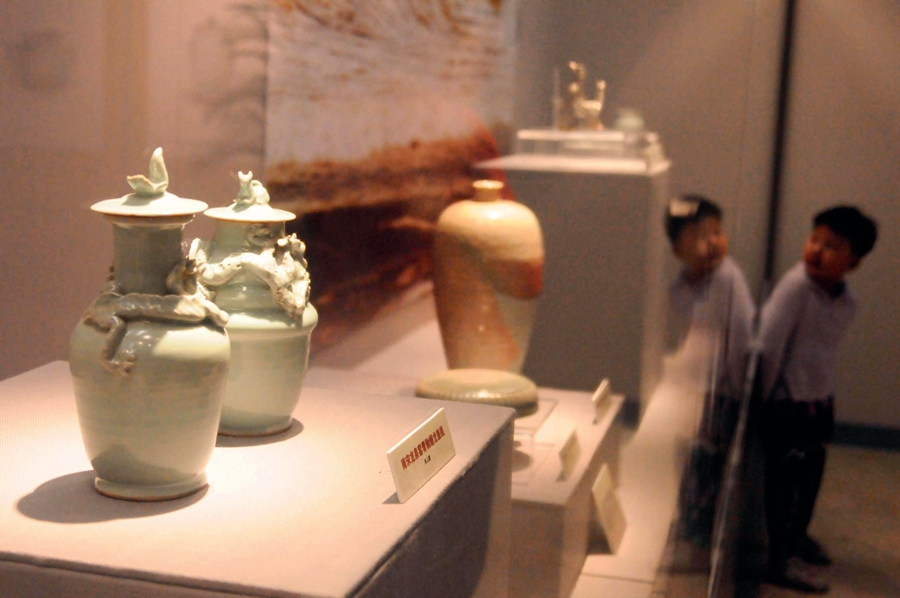
An accomplished artist himself, Song Emperor Zhao Ji (1082-1135), unhappy about the defects of chinawares produced by existing kilns, personally designed and directed kilns to make wares to his liking. These kilns were the first invested in and built by the state, and whose output was monopolized by the emperor. They therefore produced as requisitioned by the imperial court in terms of the ware’s shape, pattern, and glaze.
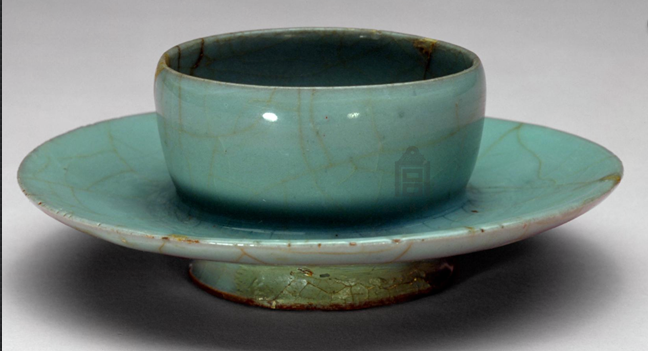
The later Ming and Qing dynasties (1368-1911) also operated official kilns. The government had ownership over them, but no monopoly on their products. The term official kiln is therefore preserved for those of the Song Dynasty among Chinese ceramics aficionados.
There are scant written records about the official Song kilns, because these royal properties were not linked to the general public. It is a mainstream view among Chinese historians that both the Northern Song (960-1127) and Southern Song (1127-1279) operated official kilns. The former was built under the auspices of Emperor Zhao Ji in Bianliang, today’s Kaifeng City, and operated for less than 20 years at the beginning of the 12th century. After the Jurchen troops pushed southward in 1127, Song was forced to move its capital to Lin’an, today’s Hangzhou, and the Southern Song Dynasty began. New official kilns were built in the city to produce chinawares for the use of the royal family.
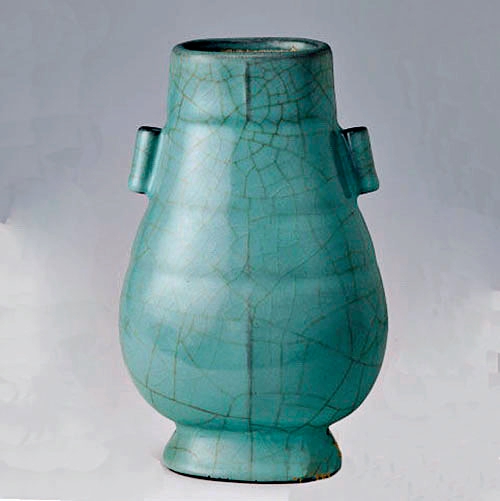
Celadon Pierced-ear Vase from the Southern Song Official Kiln (National Museum in Beijing)
Mimicking the shape of bronze wares of ancient times, this vase features a thin clay body and a thick layer of lustrous glaze covered in “crab claw” cracking. The rims and edges are sparsely glazed, revealing the color of the clay beneath. It represents the pinnacle of the artistic and technical level of official kilns of the Southern Song Dynasty.
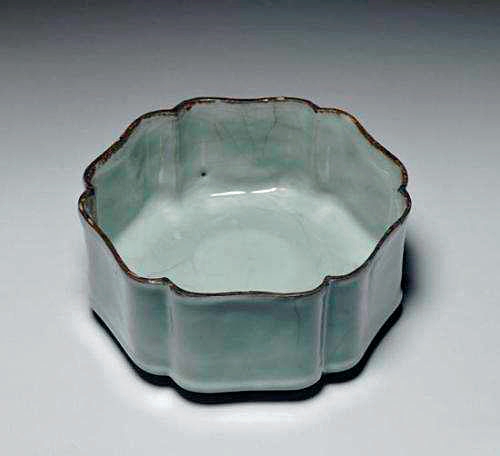
Celadon Sunflower-Shaped Jewelry Box from the Southern Song Official Kiln (Palace Museum in Taipei)
The un-lidded box is in the shape of a six-petal sunflower and of pale blue color. The glaze shows greenish hues where the layer is thicker and pinkish tones where it is thinner. The cracking on the surface is sparse but long.
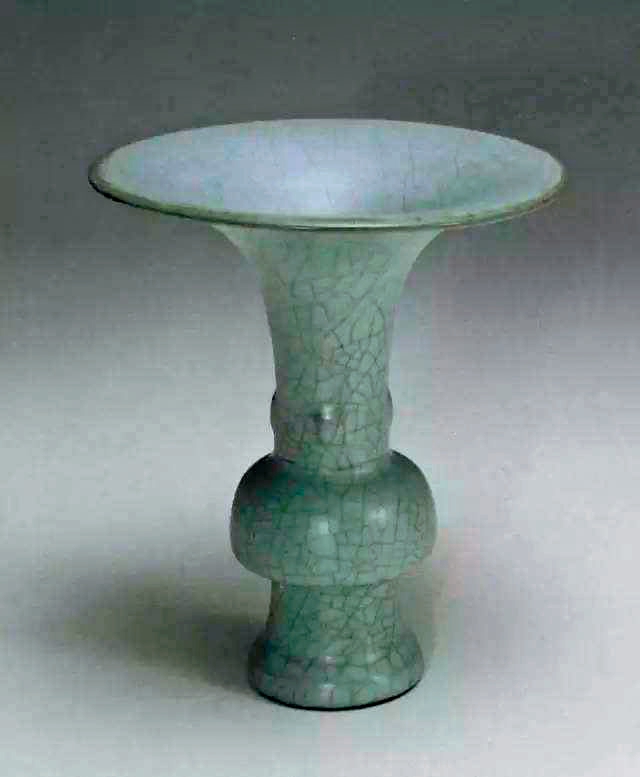
Pale Blue Glazed Flower Vase of the Northern Song Official Kiln (Palace Museum in Taipei)
Measuring 17.8 cm in height and 15 cm in diameter at the opening, the trumpet-shaped vase is modeled on bronze vessels of the Shang and Zhou dynasties (C. 1600-256 BC) that were used to contain wine or for sacrificial rituals. The Northern Song variety was however for displaying flowers.
As the Yellow River changed its course several times in history, the old city of Bianliang is now buried underground, and the site of the Northern Song’s official kilns remain unknown. Due to their brief span of operation, the output was limited. Under the royal monopoly, all their products that passed scrutiny were sent to the imperial court, while the defective pieces were smashed and disposed of on the premises to prevent them from slipping into the hands of ordinary people. What’s more, the palace of the Northern Song Empire was ransacked by the Jurchens after they occupied the city. All these factors combined, few items of the Northern Song official kilns remain preserved to date.
The most valued of the existing wares are those of the celadon color, which comes in various hues due to the firing effect. The glaze is clear, translucent and jade-smooth, and is adorned with “ice cracks.” The color at the thinly-glazed mouth of the ware is often darker, to the tune of aubergine, while the un-glazed bottom is rust colored. Upon taps the ware makes a crisp dulcet sound.
Emperor Zhao Ji built the official kilns out of his passion for art, and therefore invested lavishly in the production to pursue artistic perfection. As a result they produced glaze of unprecedented quality that featured jade-like luster and nuanced hues, which came from, among others, a variety of precious stones in the glaze material’s mixture. This is why items from the official kilns could never be copied by private kilns, which were cost sensitive.
Regarding the shape, the official wares are mostly modeled on bronze items of earlier ages, rigorously following certain norms and paying utmost attention to details. The vast majority consisted of small-sized utensils, like bows, plates, vases, and incense burners, and writing accessories. Decoration consisted of no more than dented or raised lines of the same color as that of the body. They embody beauty stemming from simplicity.
With his flair for art, Emperor Zhao Ji preferred naturalism, simplicity, and the vibe of serenity and nobility associated with them in Chinese culture. Wares of the official Song kilns embody the minimalistic trends of his time. Despite their small number, they stand for the pinnacle of ceramic arts of the Han people. Being the only chinaware that was not traded and was made at the instruction of a monarch, products of the Song official kilns are rare and priceless. Most existing pieces were from the royal collections of the Qing Dynasty, and are now in the possession of the Palace Museums in Beijing and Taipei.
SONG XIAOYAN is a course planner of antique chinaware at the Ancient Porcelain Courtyard Museum.